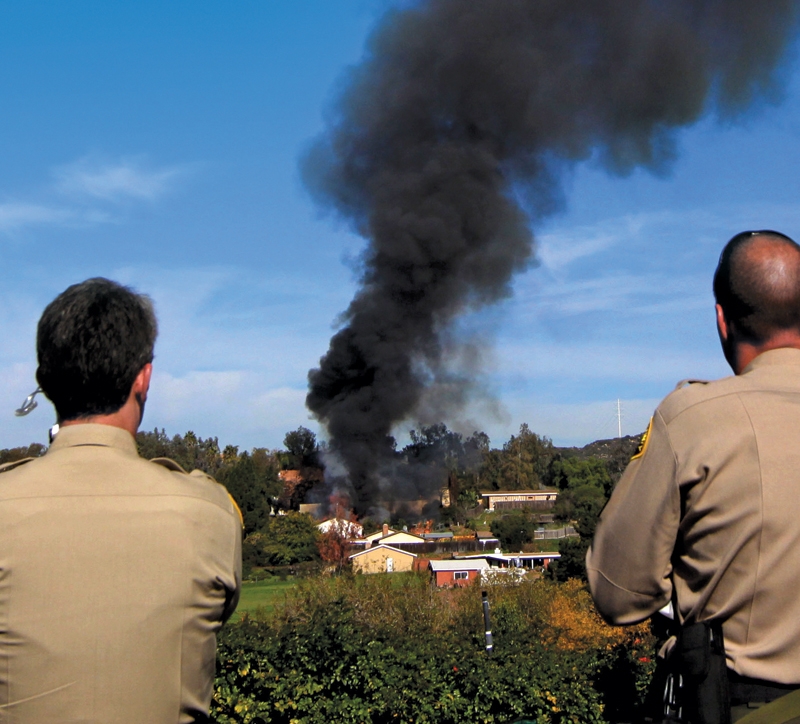

Last November, Mario Garcia was walking toward the backyard of the Escondido, California, home where he worked as a gardener when he stepped on what looked like white powder and heard a boom. The substance, it turned out, was hexamethylene triperoxide diamine (HMTD), a compound that reacts violently when exposed to heat and friction. Badly burned, Garcia was rushed to the hospital, and when the San Diego hazmat squad searched the house, they found one of the largest caches of homemade explosives in U.S. history, with several pounds of HMTD and grenades recovered, plus 25 gallons of sulfuric acid, nitric acid, and two guns.
A federal grand jury indicted the home’s tenant, 54-year-old George Djura Jakubec, on charges related to making destructive devices and robbing three banks. Meanwhile, a bomb squad detonated the explosives in his backyard but concluded that it was too risky to send technicians into the cluttered house, where clothing and dishes were stacked next to volatile chemicals. They also ruled out a robot, which could knock into a mess and trigger an explosion. The chemicals were so unstable that the safest solution—the bomb squad, hazmat team and FBI all agreed—was to burn the place to the ground.
Detonating or burning explosives produces the same gaseous admixture of carbon dioxide, water vapor and various nitrogen oxides. But burning releases the gases slowly, without dangerous force, and is thus a tried-and-true disposal technique for weaponry. After World War II, obsolete or unserviceable munitions were often set aflame in giant trenches. Following the 2003 U.S. invasion of Iraq, soldiers captured tons of bulk munitions dumped throughout the country, which Army Corps of Engineers contractors dispatched in open burns. At least 10 Army sites in the U.S. still burn old ammo in open pits.
In Escondido, firefighters built a 16-foot containment wall coated with fire-retardant gel, removed surrounding vegetation, and bored holes into the roof to allow more oxygen to reach the fire. More than 200 properties within a roughly 300-yard perimeter were readied for evacuation, and nearby Interstate 15 was scheduled for temporary closure. They waited until the weather was just right (clear skies, mild winds coming from the west toward the freeway) and, on the morning of December 9, a bomb unit placed black powder and wooden pallets inside the house. Then, ignition. The fire went according to plan—1,800°F and a plume of dark smoke that shot up about 2,000 feet. There were no major explosions, although onlookers heard some loud bangs from the grenades and ammo. The property owner’s attorney later demanded the county pay $500,000 for the damage.
More often than you might think, occasions arise where nothing solves an issue better than a hefty dose of good old-fashioned fire. Click to see our gallery of other situations when the best way to deal with a problem is just to burn it up.









